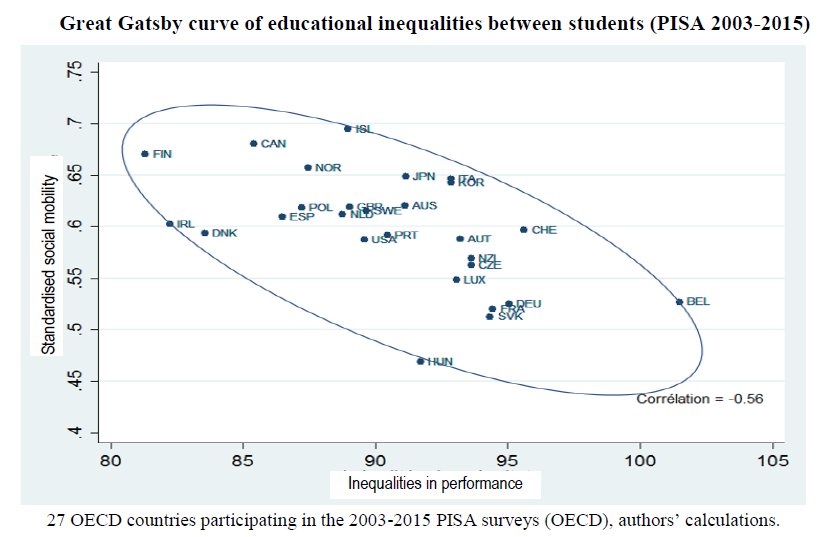Economie et Statistique / Economics and Statistics n° 499 - 2018 An international comparison of school systems based on social mobility
Article on one page
Key question
Two school systems can be identical in terms of inequality in students’ academic performance, but very different in terms of social mobility in schools, meaning the opportunity for students from socially disadvantaged families to become some of the best students (this is referred to as upward mobility, from the bottom of the social ladder to the top of the educational ladder). How can the social mobility of a school system be measured? What is the link between on the one hand social mobility and, on the other, academic inequality and academic performance?
Methodology
Based on the results of the PISA tests (Program for International Student Assessment) in Mathematics and the Social, Economic and Cultural Status of Students between 2003 and 2015 for 27 OECD countries, the authors build, for each country, an index of interdecile social mobility for students based on their relative position (or rank) on the academic achievement scale on the PISA test with their social position in their country. The authors distinguish their approach of social mobility in schools from the classical approach of the social gradient (PISA inequity index) calculated by the OECD (the share of variance in student test scores explained by the variance in students’ social, economic and cultural status index).
Main results
A new representation, referred to as the Great Gatsby curve in schools (in reference to the Great Gatsby curve on income), compares social mobility in schools and school inequality. The degree of social mobility of a school system appears to be closely linked to school inequality between students and schools.
Belgium, Germany and France, display significant inequalities in student outcomes and low social mobility in schools. Conversely, countries such as Finland and Canada display low inequality in student outcomes and between schools and high social mobility.
Higher social mobility in schools is more often associated with higher performance of the school system.

Main message
This analysis emphasises that the excellence of a school system cannot be pitted against social equity, just as school equality cannot be pitted against social mobility at school. However, it has an important limit: it does not establish any causality between school performance, school inequality and social mobility in schools.
Article on one page (pdf, 249 Ko )



